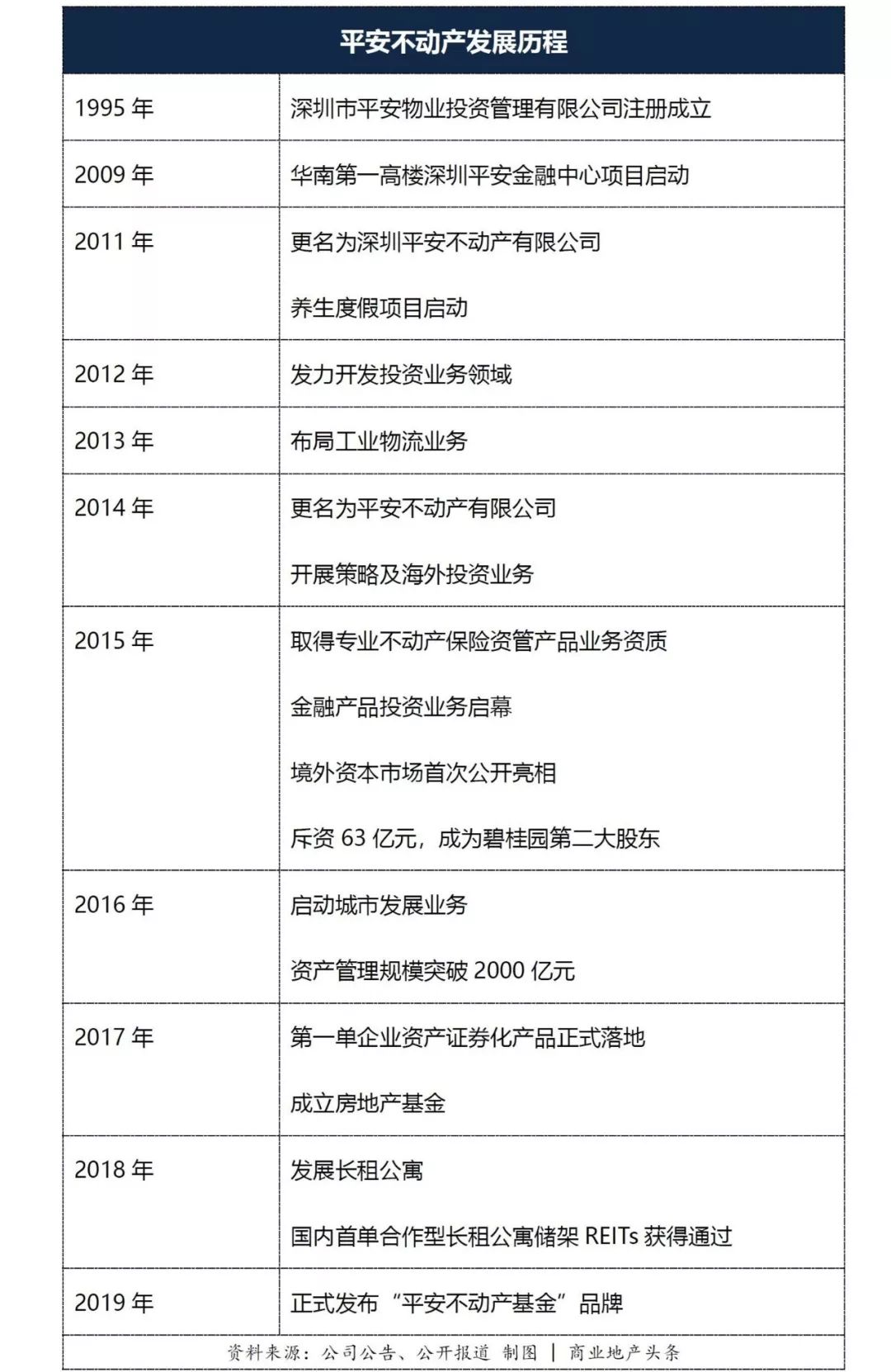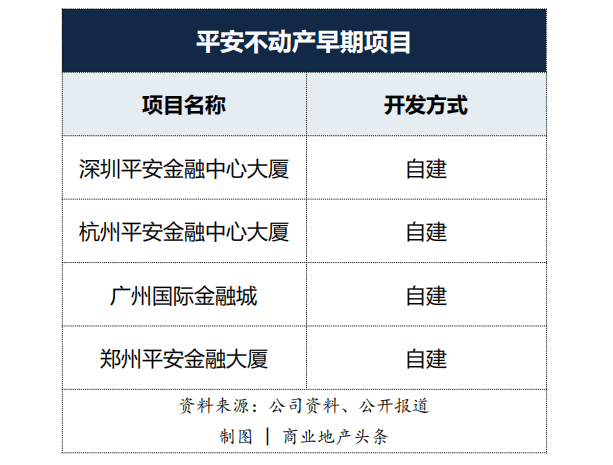Hurry, the sound of money.
Editor’s note: This article comes from WeChat public account “Commercial Real Estate Headline” (ID: Dtoutiao) a>, by Susan.
Ping’an, China’s largest “invisible landlord”, is no longer a secret of the real estate circle.
In the first half of this year, 7.2% of China ’s Ping An ’s 2.96 trillion yuan investment assets were allocated to real estate, corresponding to 213 billion yuan. This big cake of over 200 billion yuan includes investment properties of 54.657 billion yuan, as well as a certain percentage of equity and debt.
The biggest steward behind this solid family property is Ping An Real Estate. From the beginning of “property management” in 1995 to becoming “a professional real estate investment and asset management platform under Ping An of China”, Ping An Real Estate has a registered capital of 20 billion yuan and an asset management scale of more than 350 billion yuan.
Going forward, Ping An plans to increase the proportion of real estate investment from 7.2% to 10%. This means that there will be more real estate target properties included in Ping An’s asset management map.
As early as 2015, Ping An Securities stated in its research report that real estate companies with rich property resources, scarce land reserves, and commercial real estate resources in first- and second-tier core cities, especially those that have been held by insurance companies Enterprises, there is the possibility of further increase in the risk capital.
According to several media reports, at the beginning of this year, Ma Mingzhe, the chairman and CEO of Ping An Group of China, intentionally asked co-CEO Chen Xinying (in charge of Ping An Technology) to form a pure commercial real estate investment company. The latest news is that this burden may also fall on Ping An Real Estate.

Although there are still variables, in the era of the downturn in the property market, Ping An’s ambition to make a big commercial asset management game has become clear. From buying land directly to accessing real estate companies, its record in the real estate industry is impressive. And now, it is evolving towards a “super holder of existing properties.”
1 Buy land directly to access stocks, break into the real estate circle
The predecessor of Ping An Real Estate is Shenzhen Ping An Property Investment Management Co., Ltd., established in 1995. The initial purpose is to provide property for China Ping An’s own propertiesManagement services.
Because of the many policy restrictions on insurance funds investing in real estate, before 2009, its main real estate investment model was to expand its soil storage, self-construction, and development through its own funds, and use or lease it after completion. Ping An International Finance Center, which is now the headquarters of Ping An Group, is a masterpiece of this period.

The turning point appeared on September 3, 2010. The CIRC issued the “Interim Measures for Insurance Fund Investment Equity” and the “Interim Measures for Insurance Fund Investment in Real Estate”, allowing insurance companies to directly invest in corporate equity and real estate.
The only requirement is that the book balance of insurance funds for investment in real estate is not higher than 10% of the company’s total assets at the end of the last quarter (up to 20% in 2012 and 30% in 2014).
Insurance investment real estate is officially opened. The same month as the new regulations were promulgated, Ping An bought Chengdu Zhonghui Plaza from Shui On Construction and drank the head soup of venture capital investment in real estate.
Source: E-Han City Research Center Mapping | Commercial Real Estate Headline
In 2011, Ping An won the insurance company’s PE (private equity investment) and real estate “dual licenses”, and its investment in real estate is no longer “one matter one case” by the CIRC.
“Shenzhen Ping An Property Investment Management Co., Ltd.” was renamed “Shenzhen Ping An Real Estate Co., Ltd.”, Ping An’s investment strategy turned to real estate, and its tentacles extended to commercial real estate, development and investment, financial products, industrial development, strategic investment Multiple areas.
However, after the chairman Zou Yimin was dug from Sun Hung Kai in 2014, Ping An Real Estate entered the investment acceleration period.
The two main companies entering the residential and Ping An real estate sectorsFor Hangzhou Anfeng Real Estate and Shenzhen Lianxin.
According to the data, Hangzhou Anfeng Real Estate Co., Ltd. was established in 2012 and is the first company established by Shenzhen Ping An Real Estate Co., Ltd. in Hangzhou. The company photographed the E03 plot in Hangzhou Qianjiang New Town in the year it was founded.
As a wholly-owned subsidiary of Ping An Real Estate, Shenzhen Lianxin also performed very well in the 2014 soil auction market.
With the development of the real estate market, Ping An Real Estate has sent more “vests” to hunt for treasure in the land market. Shenzhen Lianxin, Hangzhou Anfeng Real Estate, Hangzhou Andong Real Estate and Shenzhen Pingxuan four subsidiaries have invested 16.789 billion yuan in 2014 and successively won 6 high-quality land in first-tier and key second-tier cities such as Guangzhou, Hangzhou, Beijing, and Suzhou. Piece.
In the first 10 months of 2015, it has successively won at least 14 lands in Beijing, Shanghai, Hangzhou, Tianjin, Suzhou and other cities alone or in joint housing companies, involving a land transfer amount of 47.732 billion yuan.
It is not difficult to see that in the initial stage of exploring real estate investment, due to the lack of sufficient investment experience, it is considered that it is necessary to be familiar with the market operation rules” in person “, safe and real estate Focus on “direct investment”-land acquisition and development by individual or joint partners.
But when he gradually became familiar with the rules of the real estate industry, he began to cooperate with the parent company Ping An of China to deploy a large number of securitization products and shift from direct investment to indirect investment.
On April 1, 2015, Ping An of China invested 6.3 billion yuan and became the second largest shareholder of Country Garden, holding 9.9% of the shares; On July 31, 2017, Ping An Life held HK $ 1.9075 billion and listed in the Hong Kong-listed Xuhui Group With a shareholding ratio of 9.94%, it became the second largest shareholder of the listed company.
As of August 10 this year, Ping An holds a total of 7 key housing companies. Calculating the equity sales of these real estate companies from January to July this year at the current Ping An shareholding ratio, Ping An’s equity sales attributable to 121.127 billion yuan.
This number can be ranked 8th on the list of equity sales in the “Top 100 Lists of China’s Real Estate Enterprise Sales in January-July 2019”. It can be seen that the real estate area obtained by Ping An’s shareholding in real estate enterprises far exceeds the independent development.
2 Deepening finance and becoming a super holder of existing properties
Becoming an invisible landlord is not the high point of the Ping An strategy, but the beginning of its financial deepening. From land purchase and development to equity allocation, the next step is to have the ability to issue financial products.
At this stage, logistics and commercial real estate began to appear more in the investment map of Ping An Real Estate. The data shows that it officially entered the logistics real estate in April 2014 and acquired the Chengdu Xindi Airport Logistics Park from Lingsheng Fund.
The starting point of its commercial real estate development path is the original CITIC City Plaza (the first large shopping mall in Shenzhen, which created multiple commercial history for Shenzhen at the time). Four years later, the project was renamed New City Plaza.
Due to the withdrawal of the main store Seibu Department Store and the shift of the entire commercial center of Shenzhen to the west, the operation of New City Plaza in 2012 was in a severe situation, and the combination of formats and the introduction of tenants were not timely. In 2013, the mall was renamed “T1 New City Plaza” again, but still failed to get out of the predicament.
Until 2014, after Ping An Real Estate took over, it was renamed “City Plaza · Shenzhen”, and the situation gradually improved. It was also this year that Ping An Real Estate officially established and operated the Business Management Department.
In mid-2015, Liang Lianchang, then the managing director of Ping An Real Estate Co., Ltd.’s shopping mall management department, publicly disclosed a Ping An commercial real estate strategy, which was summarized as “high, medium and low” in a public speech.
These three words correspond to the “three product lines”: the main high-end “PAFC” financial center series, the mid-end stylish “City Mall” series, and the lifestyle community shopping center (the pension real estate, tourism real estate series) “City Plus” series (Xishuangbanna, Wuzhen, Tongxiang).
In 2016, Ping An’s first series of “PAFC” financial center works, PAFC Mall, was unveiled to create a “new landmark in southern China” and “the highest shopping mall in Shenzhen.”
The commercial volume of the project is about 80,000 square meters, and it is positioned as a breathable urban boutique experience shopping center. The target customers are high-end business elite, young and up-and-coming upstarts, and elite white-collar women. After three years of precipitation, it will be opened soon.
Although the “heavy asset” construction of mall has been difficult, it has gained a lot in light asset operations and investment management in commerce, mainly including two aspects:
-
Asset securitization products
Early in 2016, Ping An Real Estate’s strategic investment acquired 15% equity of Sand Ship Group, becoming
Asset securitization products
Early in 2016, Ping An Real Estate’s strategic investment acquired 15% equity of Sand Ship Group, becoming